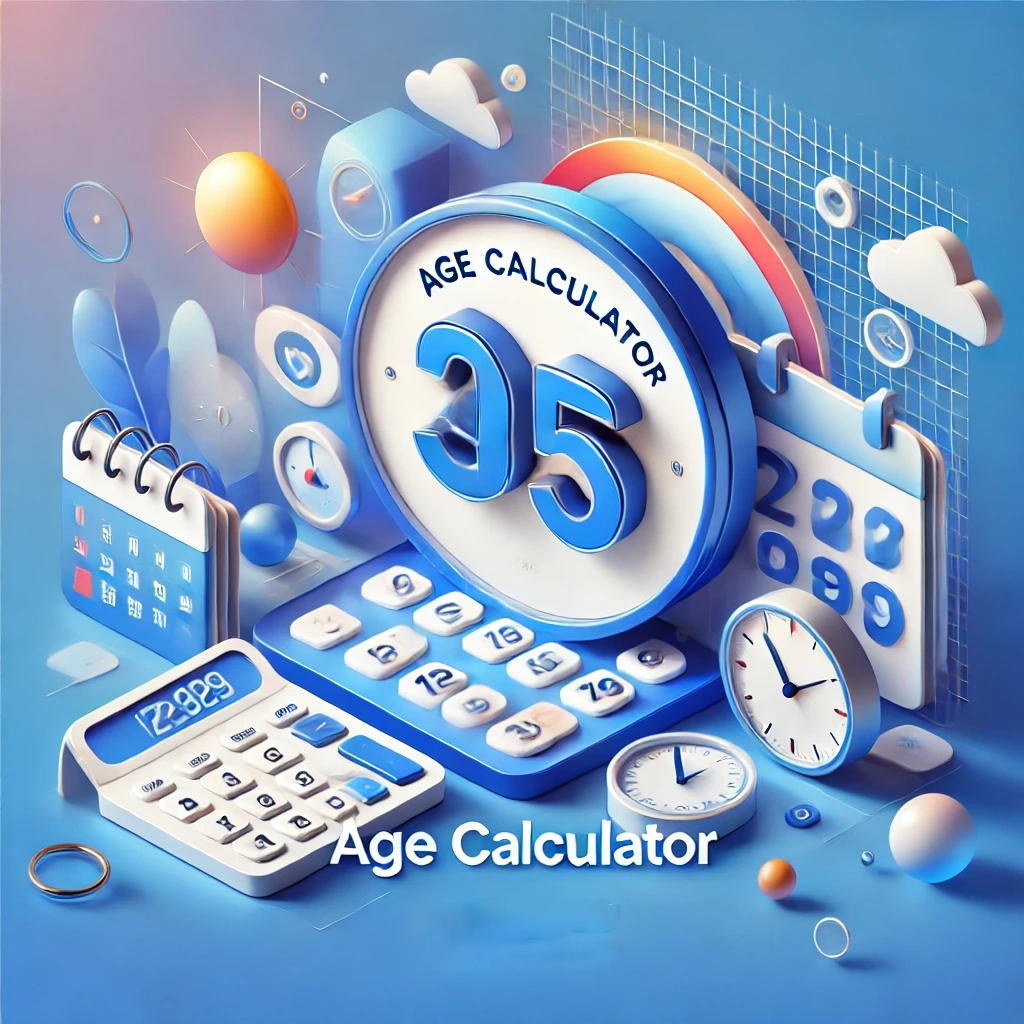The Age Calculator is a versatile and precise tool designed to determine a person’s age or calculate the time difference between two specific dates with ease. By providing detailed results in multiple units of time, it offers a comprehensive breakdown that includes years, months, weeks, days, hours, minutes, and seconds, making it highly adaptable for various purposes.

Age calculation varies significantly across cultures, with different traditions and conventions influencing how age is determined. This calculator follows the most commonly used system, where a person’s age increases on their birthday. For instance, someone who is 3 years and 11 months old will turn 4 on their next birthday. This method is widely practiced in Western countries and many other parts of the world.
However, some cultures adopt alternative systems for counting age:
Inclusive Age Counting:
In some cultures, the current year of life is included in the age count. For example, someone who is 20 years old in the common system might be referred to as being in their “21st year of life.”
Traditional Chinese Age Calculation:
In traditional Chinese culture, a person is considered to be 1 year old at birth, accounting for the time spent in the womb. Additionally, a person’s age increases at the Chinese New Year rather than on their birthday. For example, a baby born just a few days before the New Year will be considered 2 years old shortly after birth. This system reflects the cultural importance of the lunar calendar and collective milestones.
Age calculations can sometimes be confusing, particularly when dates fall at the end of a month. The varying number of days in each month adds complexity to determining precise durations. Here are two common methods of handling such cases:
Day-by-Day Calculation:
Counting days between two dates yields precise results. For instance:
Month-End Alignment:
When treating the last day of one month and the last day of the next month as equivalent, the calculation simplifies:
Both methods are valid and depend on the context in which the calculation is being performed. This calculator adopts the day-by-day calculation method to ensure precise results, especially when dealing with durations that span months with different numbers of days (e.g., Apr. 30 to May 31 or May 30 to June 30).
By understanding these variations, you can better appreciate the nuances in age calculation across cultures and contexts. This calculator ensures accuracy by adopting the most widely recognized system while accounting for complexities in date-based durations.